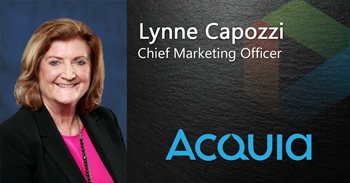Gartner Magic Quadrant Shelves WCM in 2020: Vendors Discuss the Future
Speculation was put to rest when it was announced in January that there would be no Gartner Magic Quadrant for Web Content Management. And not just in 2020, but forevermore. According to Gartner, a refashioning of requirements has influenced trends towards diversifying with DXP (Digital Experience Platform) solutions. The change-up provoked quite a stir and left many in the industry pondering WCM’s fate. CMS-Connected explores this topic with nine of the Top CMS 2020 vendors to gain their insights on the relevance of WCM now that DXP is being touted as the new standard.
Click the link to download your complimentary 2019 Gartner Magic Quadrant for WCM report!
At its core, a web content management (WCM) platform remains the foundation that enables users to post content on a website while requiring little to no knowledge of programming code. The industry has transformed significantly over the last decade. Digital teams have gotten savvier with mobile responsiveness, personalization, globalization, ecommerce, and digital marketing technology. Still, the primary need for business users and web administrators to organize and deploy content without having to hire an outside digital agency or task their internal IT department has not changed.
Insights for: Anyone evaluating or considering the purchase and deployment of a new web content management platform solution.
In July 2019, Gartner released its final Magic Quadrant for Web Content Management report, which opened with the statement, “Web content management is a foundational technology for every digital business.” Accompanied by our in-depth assessment of Gartner’s 2019 Magic Quadrant for WCM, CMS-Connected encapsulates the last decade of WCM Quadrants.
Gartner announced it would be archiving the Magic Quadrant for WCM in July 2020 — their explanation being that the WCM market has reached maturity with little differentiation in vendor offerings. I couldn’t disagree with their assessment more, although I do concur it was time for Gartner to hang it up with WCM reports. Gartner’s analysis and commentary reached a point of repetitiveness, in my opinion. Instead of maturing alongside the WCM market, they went all-in on DXP, which by their own recent admission, is a fragmented and still-evolving market.
Is WCM a foundational platform for digital business? From my standpoint, there are numerous key differentiators between these platforms with a vast range of distinctive vendor roadmaps for the future. It would be a myopic viewpoint for any analyst to assume repetitiveness between them. All automobiles have steering wheels, four tires, accelerator, and brake pedals. Does that mean there’s no substantial difference between a Honda Civic Hatchback and a Ford F-150, or a Porsche 718 Boxster and a Tesla Model Y? I have been deploying WCM solutions for two decades and have worked with all the top platforms over the years, so there’s one thing I know for sure. Business users and web administrators can easily recognize significant differences between WCM platforms based on their own unique needs and requirements, along with having to work with these platforms day in and day out.
With my opinion stated loud and clear, CMS-Connected will now present what other industry experts have to say. Click on the logos below to access our insightful Q&A with eight leaders from the top WCM platforms in the industry. Each provides their point of view on the future of web content management. The WCM platforms selected below are prominent representatives in the mid to enterprise-level marketspace.
Click on the vendor logos below to view their responses:
Magnolia
Interviewee: Brian Warrick, General Manager, North America 
Magnolia is a fast and flexible digital experience CMS available in the cloud or on-premises, used in headed or headless architectures that powers the digital presence of some of the largest enterprises in the world.
Do you agree that WCM is still a foundational platform for digital businesses in 2020?
"Yes, whether we call it a WCM or a DXP, managing content and assets that are consumed via digital channels is a fundamental aspect of business today. The term “digital channels” is the key part here since customers aren’t just engaging with brands on their websites anymore. Platforms that help brands reach their customers no matter where they are and also integrate well with the ever-evolving technologies that make up the rest of the Martech stack are perhaps more vital than they’ve ever been."
As WCM tools are getting more robust and encompassing as digital teams get savvier, what are some of the key WCM features that have not changed and are still a vital part of organizing and deploying content?
"One of the key needs of digital teams is creating relationships between various pieces of content. At a simple level, relating an image to a piece of text is one example. The use cases get more complex, but creating relationships is a fundamental need that will never go away, and one that some systems like Magnolia excel in. Another vital feature is managing content through its journey from conception to go-live. What makes content different from data is the editorial process that it goes through along its journey. A piece of content often looks quite different at publishing then when it was originally drafted. This makes the ability to define review and approval paths and to view content in context universal requirements."
Although the WCM landscape remains a crowded field, what unique features stand out to manage digital experiences and meet business requirements?
"It goes beyond features, although those are important, of course, and Magnolia’s features stack up with any solution on the market. But if we’re being honest, many of the features that used to be differentiators are mostly commoditized at this point. That’s why at Magnolia, we focus on minimizing complexity at every stage of the content journey, from idea, through development and creation, and on to production. We believe that is what good technology does; it takes the complex and makes it simpler. It’s why we believe building out a proof of concept (POC) for prospective clients is so important. A good POC allows companies to see exactly what a content management system will be like to work with, rather than relying simply on a demos and feature lists. They get to answer the question, ‘Will this make our lives easier without sacrificing quality of content?’"
Do you feel an AI-enabled WCM will have a positive impact on the market?
"Some might say that we are just scratching the surface of where AI can make positively impact the web content management space, but there are already a number of areas AI is solving everyday problems for content managers and creators. For instance, Magnolia’s AI-powered contextual search learns from authors’ and editors’ behaviors, suggesting the content and assets that they are most likely looking for. AI can also be used to automatically tag assets and images based on their content. Both types of functionality can be extremely helpful brands managing robust amounts of content."
Where do you see the WCM marketplace in five years?
"I see two themes playing out over the next five years — consolidation and simplification. The Martech landscape has exploded, and there are now a lot of vendors in the WCM/DXP market. It is normal to expect some consolidation here. The other theme is businesses choosing to simplify their workloads, choosing best-of-breed solutions that interoperate well and that provide considerable value. This will include a move away from 'suite' solutions and into best-of-breed tools that excel at enabling digital teams to move quickly."
Sitecore
Interviewee: Jill Grozalsky, Product Marketing Director
Sitecore delivers a digital experience platform empowering brands to build lifelong relationships with their customers, bringing together content, commerce, and data into one connected platform.
Do you agree that WCM is still a foundational platform for digital businesses in 2020?
"Yes, but there is more to the story. Web Content Management (WCM) platforms are critical for digital businesses in 2020, as they provide the infrastructure organizations need to deliver information and keep content fresh, as well as serving as the foundation on which other capabilities are built. WCM is the engine behind customer engagement and is the first tool used to start building relationships with customers. Customers visit a website with intentions and questions. WCM allows companies to figure out a visitor’s intent and present relevant content based on their searches that can lead them through the customer journey and on a path to purchase. That being said, while WCM is a foundational platform, it is just one piece of the broader CX puzzle as companies work to deliver exceptional customer experiences. Companies today need to earn trust with every interaction. Having a platform that collects data and actionable insights provides the ability to deliver tailored experiences. Driving engagement, empowering customers, and giving them more control over their interactions with a brand are essential."
As WCM tools are getting more robust and encompassing as digital teams get savvier, what are some of the key WCM features that have not changed and are still a vital part of organizing and deploying content?
"Headless: With the ongoing proliferation of devices, the need to deliver consistent content across a range of devices is more important than ever. Having a headless WCM solution provides unlimited flexibility to companies by de-coupling content delivery from rendering – enabling companies to reach customers anywhere they choose to engage.
Workflow: As teams are increasingly global and dispersed, the importance of workflow can’t be overlooked, as it is a vital part of ensuring that the right content is deployed. WCM workflows help facilitate content editing and approval through a collaborative effort to ensure appropriate contributors and stakeholders are involved prior to publishing.
Analytics: You can’t change what you can’t measure, so having performance data within a WCM solution is important to working smarter, not harder when it comes to developing content and customer experiences. Analytics within a WCM system drives marketers to become more data-driven, opening the door for capturing customer data, which can transform companies by bringing them closer to consumers."
Although the WCM landscape remains a crowded field, what unique features stand out to manage digital experiences and meet business requirements?
"The features that made WCM popular in the first place are the same features that will help businesses manage digital experiences via omnichannel content delivery, advanced workflows, and easy content administration, to name a few. Increasingly, though, what truly differentiates WCM is what is wrapped around it and how it creates a path to maturity for companies. The use of a WCM system is the first step in making an informed effort to improve customer experience for companies, but this is truly just the beginning of the journey for managing digital experiences and meeting business requirements. A stand-out WCM solution provides an efficient, effective, and scalable way to deliver a superior customer experience, as well as a pathway for organizations to move from a WCM system to a DXP platform, enabling them to act on customer insights to deliver personalization and take advantage of advanced marketing functionality. "
Do you feel an AI-enabled WCM will have a positive impact on the market?
"AI-enabled WCM systems and DXPs will certainly have a positive impact on the market as the exponential use of AI will continue to raise the bar for how we define exceptional customer experiences. The additional layer of content intelligence and insights that AI provides will contribute to more effective marketing campaigns, lead generation, and conversions. The increase in AI-enabled WCM systems and DXPs show us that the world of personalization is changing as more of the process becomes automated. Some view the increase in AI and use of automation in marketing as a negative. They fear that it will eliminate jobs or the need for certain skills. However, the need for brands to establish real connections with their audiences won’t change. We will always need human creativity to develop content that taps into emotions and plants the seed of brand loyalty. While you can automate personalization or content delivery, you cannot automate those connections."
Where do you see the WCM marketplace in five years?
"The WCM marketplace in 5 years will look similar to how it looks today – equally crowded and equally diverse. There will certainly be more headless WCM or SaaS WCM options, but the fundamental need for a WCM solution won’t change, keeping both the WCM and DXP markets thriving. As companies progress their digital transformations, they will graduate from WCM systems to DXPs and build up their marketing technology stacks to match ever-changing customer expectations. They’ll need a platform that collects data and actionable insights that can orchestrate campaigns across channels, and can help them plan, create, and manage the granular content assets that fuel digital experiences delivered by WCM. Vendors like Sitecore that provide the breadth of those capabilities in an integrated platform – compatible with the needs of the individual business – will be in the driver’s seat."
For more information about Sitecore, read our Sitecore platform review.
Acquia
Interviewee: Lynne Capozzi, Chief Marketing Officer
Acquia is an open-source digital experience company built around Drupal to give enterprise companies the ability to build, operate, and optimize websites, apps, and other digital experiences.
Do you agree that WCM is still a foundational platform for digital businesses in 2020?
"Absolutely. Despite any and all technological changes and progressions, businesses will always need to solve the baseline problem of how to effectively and efficiently deliver content to their customers, employees, prospects, and constituents. Putting content online is not difficult, but knowing what the user’s interests are, which content is relevant, and knowing how to engage them through the right communications channel are all extremely complex."
As WCM tools are getting more robust and encompassing as digital teams get savvier, what are some of the key WCM features that have not changed and are still a vital part of organizing and deploying content?
"At Acquia, we have always seen open systems as a core, critical component of successful CMS. Content should be easily served up to any other system. There are so many disparate technologies that often are closed systems that cannot connect and coexist, so data gets siloed, and companies don’t end up with a holistic view of each customer. This hobbles their ability to run nimble campaigns and react quickly to change as it happens, because of the limitations of their technology.
So, despite an investment in technology, these rigid, closed platforms with a built-in inability to share and integrate data, actually become a barrier to digital experience, not an enabler."
Although the WCM landscape remains a crowded field, what unique features stand out to manage digital experiences and meet business requirements?
"As the shift from CMS to digital experience management (DXM) continues, more and more companies are seeing how essential customer experience initiatives are. Solutions that help organizations manage digital experiences across multiple channels are becoming more critical. Today, customer experiences also happen outside of the website, and both consumers and business buyers have come to expect dynamic experiences that integrate with other channels beyond the website. It all starts with a website, but the Technology that can deliver the right content to all of these channels at the right time will become a core tool for every marketing organization in the very near future."
Do you feel an AI-enabled WCM will have a positive impact on the market?
"Very much so. Even though there’s a lot of froth around it industrywide, in the CMS world, AI is another implementation that can create a better, automated personalization tool. The work that AI can do in minutes quite literally would take a team of marketers years to do. It’s still early stages, and companies still need to figure out how they can build and adjust their organizations to use AI effectively, but over the next few years, it will radically change how we view personalization and experience."
Where do you see the WCM marketplace in five years?
"I believe we will see open, integrated platforms that use a combination of AI, Personalization, and a great customer experience all rolled into one. Open Marketing systems.
We’re also going to see a huge number of B2B and B2C brands learn from businesses such as the trendsetters in personalization and tech - Shake Shack and StitchFix, that are doing experience right. This will become what determines winning or losing with customers. Experience and personalization will move on from knowing someone’s name and location into truly understanding what customers need so brands can be helpful and valuable so that those customers will stick around.
Content management is the key to better experiences, so I see nothing but progress in the years ahead."
For more information about Acquia, read our Acquia platform review.
CoreMedia
Interviewee: Doug Heise, Vice President, Global Marketing
CoreMedia, a developer of the content management and experience orchestration platform, CoreMedia Content Cloud, is committed to forging high-touch collaborations with category leaders across all industries.
Do you agree that WCM is still a foundational platform for digital businesses in 2020?
"Absolutely. Although WCM must now be considered a part of a broader set of omnichannel digital experience capabilities, it needs to sit at the core of that emerging ecosystem. Because great digital experiences depend on great content that must be delivered at every stage in the customer journey with speed and agility – at scale – there is still a tremendous need for WCM. Companies need to manage and frequently update content across all of their global web properties.
And it’s not just the Web. We see a need for more digital content on every channel, in many languages, for different audiences. This puts a lot of pressure on efficiency and process automation. Mature content management systems like CoreMedia provide the tools and integrations to enable the content and marketing teams to master that challenge."
As WCM tools are getting more robust and encompassing as digital teams get savvier, what are some of the key WCM features that have not changed and are still a vital part of organizing and deploying content?
"Although marketers, merchandisers, and e-Commerce professionals are always looking for the latest technologies to engage customers, there are certain capabilities that remain fundamental to all WCM tools: a flexible, object-oriented core content repository that separates management from presentation; support for both ad hoc collaboration and structured workflows; and advanced user and rights management. Global experience delivery capabilities must include a dynamic event-based architecture, multi-site management, translation workflows, and support for true headless delivery.
Because no WCM platform can work in isolation, another essential set of tools includes the ability to easily and seamlessly integrate with third-party tools, including analytics, e-Commerce platforms, marketing tools, customer data, and tools for optimizing your content. And, of course, all of these features must be intuitively easy to use, flexible, and simple to extend and customize through built-in developer tools and a configurable business layer."
Although the WCM landscape remains a crowded field, what unique features stand out to manage digital experiences and meet business requirements?
"One feature that should be ubiquitous but is actually less common than you would expect is instant omnichannel previews that let you see what all of your customer experiences will look like for any device, channel, persona, or region. And these previews need to include all third-party elements, including products, external content, and integrated rich media.
Secondly, a WCM platform is only as strong as its ability to integrate and extend. Some WCM tools come with a broad set of pre-built integrations and fast, flexible tools for customizing the experience. The next generation of WCM tools will need to emphasize agility and flexibility above all else with support for content planning, orchestration, measurement, and optimization.
Finally, both B2C and B2B companies need the ability to manage and integrate huge catalogues of product and marketing assets, so a built-in Digital Asset Management system is also a huge plus."
Do you feel an AI-enabled WCM will have a positive impact on the market?
"Without a doubt. We’re already seeing customers using AI to produce content for large catalogs of products, sports, or business news - all based on structured input data.
This will also have a huge impact on personalization. Rather than relying on segments, AI technologies are giving retailers the ability to create online experiences for an audience of one. Cutting-edge marketing automation software can capture reams of customer data (from clickstreams to browsing history), combine that with real-time information (location data, current weather, etc.) then use AI-powered tools to produce custom offers and shopping environments that match a customer’s preferences and help them convert."
Where do you see the WCM marketplace in five years?
"In the next five years, WCM will be at the center of an emerging suite of truly agile digital content and experience delivery tools. We call this brand orchestration. In this ecosystem, WCM will serve as the master control panel – the captain’s bridge - for orchestrating, managing and updating content from all sources. We believe that brand orchestration will become the system of record for all successful brands through the ability to manage content for all customers, including instant updates, and the synchronization of experiences across all touchpoints – including online and mobile experiences, but also in-store, programmatic advertising, out-of-home, and video.
It will provide the tools for editing, enriching, scheduling, translating, localizing, and approving content. It will allow business users to assign content to channels, audiences, locations. And it will become the primary engine for integrating data, feedback, and recommendations from all available sources to drive changes and decisions."
For more information about CoreMedia, read our CoreMedia platform review.
Progress Software
Interviewee: Gregg Shupe, Digital Experience Thought Leader
Meaningful engagement, elevated experiences delivered with ease, Progress Sitefinity makes it easy for marketers and developers to deliver compelling, multichannel user experiences.
Do you agree that WCM is still a foundational platform for digital businesses in 2020?
"Digital experiences are created by content, not just text, but imagery, video, styling, etc. Content is the center of digital engagements and experiences. Modern WCMs are set up to distribute content to build experiences and journeys that take place on multiple platforms and devices, beyond just web pages. The WCM is the central repository of content, and the capabilities to send the content to any digital format within a business's digital strategy set the winning WCMs apart."
As WCM tools are getting more robust and encompassing as digital teams get savvier, what are some of the key WCM features that have not changed and are still a vital part of organizing and deploying content?
"Managing content across an omnichannel strategy is still one of the vital features of a modern WCM. Organizing and managing content for distribution both to the front-end website, as well as digital destinations beyond the company website. Content management capabilities have evolved with the savviness of digital teams, and modern WCMs provide an easy access to create, manage, and distribute content without reliance on IT teams."
Although the WCM landscape remains a crowded field, what unique features stand out to manage digital experiences and meet business requirements?
"Digital experiences do not solely reside on domains owned by the company. Modern customers demand a seamless, frictionless experience throughout all of their touchpoints, and that includes mobile, wearable, AR, and IoT devices. To address this, marketers need the tools to create, manage, and distribute content without reliance on IT teams. Developers, on the other hand, need to break the inherent limitations of traditional WCMs and be able to leverage any frontend framework to deliver across platforms and devices. A modern WCM fosters this sort of cross-team collaboration and provides the toolset for frontend-agnostic content management and delivery. Therefore, one of the most important features of a winning WCM is the ability to decouple content management from the presentation/front-end. That, of course, is possible via a robust set of APIs / data services to not only store, fetch and serve the multi-channel content but also support the level of customization and personalization that traditional WCMs have been providing."
Do you feel an AI-enabled WCM will have a positive impact on the market?
"Keeping up with customer trends and expectations is what I would consider a “Sisyphean task” -- the Greek mythological story where Sisyphus was cursed by the gods to push a rock up a hill, however, every time he got close to the top, the rock would roll back down. Even if companies had an army of marketers and business analysts to comb through all of their customer experience data, they would still be left behind. A.I. offers the ability to speculate or make predictions based on data and training. For most companies, collecting data is not the issue; it’s identifying the insights and knowing what to do with them. I believe this is where A.I. can be very helpful."
Where do you see the WCM marketplace in five years?
"The WCM market is very saturated today with thousands of vendors promising they have the easiest, comprehensive, and versatile software on the planet. This space, however, is very fragmented with full-ecosystem platforms to entry-level open source. The future, in my opinion, will weed out some of the similar competing platforms and the vendors whose development risks are not what the market is looking for. Those who rise to the top, will be the vendors who invest in connectivity. Be it continued investment in improving the API-driven content management, 3rd party and, A.I. integrations, and omnichannel customer data collection or unlocking the development potential by adding more and better frontend frameworks to the mix of frameworks they support. The key to successful WCMs is to make it easy for marketing teams to create and distribute content based on predictions of what the customers want. Equally important, they need to let development teams leverage emerging frontend technologies rather than being locked into a proprietary platform."
For more information about Progress Software, read our Progress Software platform review.
Crownpeak
Interviewee: Jason Breed, Global Lead, Partnerships & Alliances
Crownpeak provides an enterprise-grade, cloud-native platform with built-in quality assurance that gives you everything you need to deliver high-quality, contextual experiences across hundreds of touchpoints.
Do you agree that WCM is still a foundational platform for digital businesses in 2020?
"Absolutely, we are seeing higher usage rates across our products than ever before. This is partly because customers are responding to a life-changing global event, but it is a trend we expect to continue beyond 2020. Where we see changes are in how the Martech stack is evolving around WCM, and foundational is the perfect word to describe it. There is specialized marketing technology out there to help you do just about anything, but the tech always ties back to content in some way. Organizations have unique needs that are served by lots of different technologies, and marketing ops isn't just a role anymore, it's a department. People are looking to deliver high-quality digital experiences, and that is not possible with a single piece of technology. You must assemble your stack piece by piece, and it makes sense to start with Web Content Management. When you have that solid base, you can then add the pieces that help you do things like personalize, optimize, and distribute the content to the right audiences."
As WCM tools are getting more robust and encompassing as digital teams get savvier, what are some of the key WCM features that have not changed and are still a vital part of organizing and deploying content?
"One of the things we hear from customers is that while WCM tools have gotten more sophisticated and broader, they’ve also gotten a lot more complex. It’s now more complicated than ever to use the large enterprise suites to manage content. One thing that hasn’t changed is the importance of being able to create and deliver content quickly and easily, and for those experiences to be delivered to customers anywhere in the world in an instant. Consumers have less patience than ever and expect sub-second response times, or they bounce. We see a lot of customers refocusing on the speed of execution and results, and less on shiny and new functionality."
Although the WCM landscape remains a crowded field, what unique features stand out to manage digital experiences and meet business requirements?
"Many WCM features that were once differentiators have been commoditized – you can deliver an excellent, personalized digital experience with any of the enterprise WCM tools available. But there are huge differences in the resources and time required to do so. Platforms that do not require extensive infrastructure to function have huge advantages over the rest of the market. Customers that go with a platform architected to take advantage of client-side processing power will be able to create and deliver experiences in a fraction of the amount of time at a fraction of the cost. Similarly, platforms with solid integration frameworks are much better suited to be the base of an efficient Martech stack."
Do you feel an AI-enabled WCM will have a positive impact on the market?
"Yes, there is no doubt that AI capabilities have had, and will continue to have, a huge impact on the WCM market. What AI does well is optimization – AI helps you serve the right content to the right people at the right time. On the other hand, AI is not a magic bullet. We will not see AI-generated content decimating the market for content producers. AI must be a part of your digital transformation strategy, but an “AI-enabled WCM” does not have to have native AI capabilities. There is a glut of AI engines in the market that are already tuned to specific industries and use cases, and an integration-friendly CMS is well-positioned to deliver more relevant AI-driven experiences."
Where do you see the WCM marketplace in five years?
"The market has started to realize that features are commoditized, the next big battle will be over who can make their tool the simplest to set up, easiest to learn, and most efficient to operate. Legacy players are saddled with outdated architectures and must spend large amounts of resources to stay relevant. How well they do will determine whether they remain on top or are replaced by nimbler, SaaS WCM systems. We will finally get to the point where Enterprise platforms are as clean, lightweight, and easy to use as consumer-grade platforms like Squarespace and Wix, but with less of a focus on traditional websites and more focus on other channels. Whether that happens from the top down or the bottom up remains."
For more information about Crownpeak, read our Crownpeak platform review.
Episerver
Interviewee: Deane Barker, Sr. Director, Content Management Strategy
Episerver is a global software company offering web content management, digital commerce, and digital marketing through the Episerver Digital Experience Cloud software platform.
Do you agree that WCM is still a foundational platform for digital businesses in 2020?
"Yes, insofar as ‘WCM’ means ‘a system that is primarily focused on web publication but is flexible enough to broadcast content to any channel.’ I realize the world of information delivery is always changing, but for more organizations, the web is still the dominant delivery platform. So long as your system is storing content free from presentation, and has API support to allow you to access that content and repurpose in different ways – like non-web channels – then a web-focused system is perfectly acceptable, and probably appropriate for most organizations."
As WCM tools are getting more robust and encompassing as digital teams get savvier, what are some of the key WCM features that have not changed and are still a vital part of organizing and deploying content?
"Content modeling will always be utterly foundational to any content scenario in any channel. There is simply nothing else that will impact a project more over the long term than the ability to effectively model and represent a logical domain of content. Mistakes and limitations here are like the foundation of a house that cracks – it’s hard to save anything build on top of it."
Although the WCM landscape remains a crowded field, what unique features stand out to manage digital experiences and meet business requirements?
"Content collaboration and editorial workflow are too often minimized. We assume editors “will just get it.” Systems need to concentrate on the editorial experience. Happy editors simply make better content. Also, we’re seeing such a fracturing of templating systems. Server-side HTML is receding. Systems need to be able to provide support for client-side rendering frameworks like React, which includes things like server-side rendering of the initial requests and middleware to ease the developer overhead of wiring up components."
Do you feel an AI-enabled WCM will have a positive impact on the market?
"Absolutely. The usage of AI in content consumption and supply analytics filters back into editorial questions about what content you should create in the first place. Episerver’s Content Intelligence product does just this – it uses Natural Language Processing to determine the actual topics visitors are consuming and the supply of content waiting for them. This helps editors make decisions about where they have enough content and where they’re falling short."
Where do you see the WCM marketplace in five years?
"Distributed. The future is content platforms and systems that take a ‘big tent’ approach and seamlessly incorporate content from multiple backend systems, combining them to form integrated experiences so that visitors have no idea they’re consuming content packaged together from multiple silos. Consider: what would a CMS look like if it didn’t actually store any content? That’s a glimpse into the CMS of the future."
For more information about Episerver, read our Episerver platform review.
e-Spirit
Interviewee: Michael Gerard, Chief Marketing Officer 
e-Spirit provides a CMS solution bundled with their digital experience platform called FirstSpirit DXP. The FirstSpirit DXP platform, offered through a SaaS or on-premises model, helps customers accelerate time to revenue with personalized, content-rich digital experiences.
Do you agree that WCM is still a foundational platform for digital businesses in 2020?
"I always like to start from the perspective of the customer, and today’s customers, be they B2C or B2B, demand that their brands deliver a consistent, connected online experience on any touchpoint, extending beyond only the ‘web’ (e.g., mobile applications, digital signs, smart speakers, virtual assistants, etc.) Therefore, unless you’re a vendor with a large, monolithic CMS designed only for the web, calling today’s CMS a “web” content management system is a misnomer. That said, a CMS that enables a consistent, connected online experience on any touchpoint, beyond only the ‘web’, IS a foundational platform for digital businesses in 2020. Depending upon an agile, hybrid headless CMS to orchestrate content-driven experiences and manage digital businesses will only become more important in the next 12-18 months as:
1.) The creation of content increases, as indicated by a recent study by the Content Marketing Institute.
2.) The need for business and technical agility surges due to COVID-19, requiring support of new business models, delivery processes, and types of customer interactions. (e.g., leveraging a hybrid headless CMS for interoperability in any DX ecosystem, and ensuring a rapid launch and time to value of new applications)
3.) Brands need to further leverage content across any communication channel (e.g., digital presence, email marketing, digital signs) to inspire and connect with buyers to build relationships and differentiate their products and services. (e.g., for experience-driven commerce, integrating an enterprise-class hybrid headless CMS with e-commerce platforms)"
As WCM tools are getting more robust and encompassing as digital teams get savvier, what are some of the key WCM features that have not changed and are still a vital part of organizing and deploying content?
"As e-Spirit’s CMS has continued to evolve, there are no doubt several key features to our enterprise-class content management system that have proven to be a mainstay for our existing and new customers. Examples include:
Multi-site, multi-language, and multi-brand management to orchestrate content creation and delivery across sites, touchpoints, brands, or regions and ensures a single source of truth for content that boosts efficiency and enables the highest compliance standards. This is a particularly valuable capability in today’s more complex, multi-channel world.
Workflow management to orchestrate the entire creation, approval, and delivery process of content across an organization and multiple functions and teams.
User rights management to be able to define particular roles for different users or groups across a company, thereby creating a more efficient and effective content management process. (e.g., manager, editors, copywriters, lawyers, etc.)
Interoperability and the capability to enable rapid and deep integration to third party systems. At least for e-Spirit, interoperability has been part of our solution’s DNA from the start to enable our CMS to operate within any DX ecosystem. (e.g., CMS + commerce platforms for content-driven commerce; CMS + marketing automation; utilizing our headless CMS capabilities to enable content through a REST API to be pulled into any touchpoint)
Static HTML file deployment as the fastest and most secure way to deploy ‘.com sites’. Even brand new headless CMS vendors, who lack this capability, are starting to realize the benefits of static HTML files and have begun to build these capabilities, which are a standard feature in enterprise-class CMSs. (see JAMstack movement)
An intuitive user experience/UI. This has become even more important with the increasing need for agility and putting the power of experience management into the hands of business users with an easy to use CMS interface.
Search capabilities for empowering customers to create a more personalized online experience and increasing their engagement with content relevant to their needs."
Although the WCM landscape remains a crowded field, what unique features stand out to manage digital experiences and meet business requirements?
"e-Spirit is in the fortunate position of having an industry-proven solution that includes all of the more traditional CMS features (refer to prior question) not available in many of our newer competitors, coupled with “newer” capabilities required to deliver next-generation experiences to any touchpoint with ease. Unique features which stand out to manage digital experiences and meet business requirements, in alignment with the three key elements of Agility, Empowerment, and Intelligence, include:
Agility: Hybrid headless, API-first CMS enabling rapid launch of any customer touchpoint or application integration, combining the agility of a headless CMS with the enterprise capabilities of a “traditional” CMS. Few, if any, traditional CMS vendors are API-first.
Rapid launch of a CMS with a vendor’s start-up kit. (e.g., e-Spirit’s Experience Accelerator) To optimize the speed of creating content-rich omnichannel experiences, companies should ensure their CMS vendor offers some type of rapid, out-of-the-box start-up kit. For example, e-Spirit’s Experience Accelerator “leapfrogs” CMS project implementation times ahead by up to 75% for faster time to market and accelerated time to revenue by offering an out-of-the-box hybrid headless CMS with a front-end progressive web application and other next-gen features.
Ability to view and edit content on any touchpoint. (e.g., e-Spirit’s Touchpoint Editing) Your CMS should enable business users to view and edit content in the context of any channel easily and intuitively—without the need for a complex CMS integration by IT—giving them complete control for delivery of highly individualized customer experiences at every touchpoint.
Providing a modern microservice-based end-to-end delivery architecture instead of monolithic, hosted classic CMS suites.
Empowerment: Non-technical users (e.g., e-commerce managers, marketers) must be able to create, manage, and deliver content to any touchpoint with minimal dependence on technical teams. This will ensure that their companies can rapidly launch content-driven experiences, at minimal cost, to react to customer needs and better engage their audiences. CMS features that empower business users to reach this goal include:
Deep integration with commerce platforms, making it easy for business users to create more content-driven commerce experiences. (e.g., e-Spirit’s prebuilt integrations with Salesforce Commerce Cloud, SAP Commerce Cloud, and others - in this video, see how easy it is to create shoppable videos and enable voice-driven commerce with this type of deep integration)
Intuitive user experiences and interfaces, as previously mentioned.
Native SaaS and cloud capabilities to enable provisioning of new integrations, features, and content-driven experiences.
Intelligence: Delivery of dynamic experiences with AI-driven personalization. AI-driven personalization should be a key part of a high impact content management strategy. This will help you personalize anything that impacts the digital experience—layout, menu bars, display ads, pop-ups, CTAs, text, etc.—for any channel according to each visitor’s unique persona or on-line behavior or any micro-segment. For example, e-Spirit’s Intelligence Content Engine, cited in Gartner’s Magic Quadrant for Personalization Engines, enables: 1) effortless collection of internal, external and behavioral data; 2) leverage of that data to create micro-segments across your database, and 3) delivery of dynamic experiences across any touchpoint for micro-segments or individuals.
Content analytics and insight in a more fragmented world. The days of manually creating and updating many different websites across a company are (or should be) far behind us. Your CMS vendor should enable the creation and management of fragments of content across both internal and external touchpoints, and even more importantly, the analysis of those fragments to better manage their impact. For example, e-Spirit’s Smart Dashboards give marketers easy access to all content-relevant KPIs in one central location, making it simple to orchestrate intelligence-driven campaigns across sites, languages, and channels for high impact results."
Do you feel an AI-enabled WCM will have a positive impact on the market?
"AI-driven experience management has already begun to have a positive impact on the market, and a CMS without rich AI capabilities will not survive. AI should be used to empower business users, make their lives easier, and help their companies to create compelling, personalized digital experiences for end-users. And most importantly, AI should be part of the fabric of a CMS vendor and their solutions and not a stand-alone effort in only one part of their architecture. For example, within e-Spirit’s digital experience platform, AI impacts content and experience management across several areas, including but not limited to:
Natural Language Generation: To be an effective marketer, you need to create content fast. Natural Language Generation (NLG) automatically generates human-quality text with limited human resources. It eases the pressure on marketers by taking over routine content creation tasks and gives companies a huge advantage: scale.
Personalization for dynamic digital experiences: Examples of AI and machine learning to create these experiences include:
Automated Testing and Optimization: Automatically optimize content performance using AI-powered testing and optimization algorithms. Simply set your optimization goals and let the FirstSpirit Intelligent Content Engine select top-performing variations for you for effortless optimization.
Modifying digital experiences in real-time to optimize impact: Instantly quantify the impact of dynamic content changes on KPIs and tailor unique digital experiences for each persona or micro-segment.
Translation: For most organizations, translations are costly and inefficient. Powered by AI, e-Spirit’s TranslationStudio captures even the tiniest language nuances and reproduces them with higher quality and faster speed, helping business users overcome language barriers with an easy solution that keeps costs low even when translation volume is high."
Where do you see the WCM marketplace in five years?
"We see five key forces that impact where we need to continue investing in from a CMS perspective in the next five years:
Buyer Demands: What’s needed to engage and inspire buyers will continue to change, and at a faster rate.
Competition in the tech space will only increase, requiring vendors to innovate at a more rapid pace to survive and thrive.
Software Technology Advancement: New advancements in technology will continue creating opportunities for agile CMS vendors to better meet their customers’ needs.
Expansion of Existing Touchpoints and Development of New Touchpoints: Adoption of non-web focused touchpoints will increase, and development of new touchpoints will continue, increasing the importance of hybrid headless content management solutions to support varying (and new) methods of delivering content to end-users’ devices.
Shift in business interrelationships: Business, environmental and technological influences will impact how companies work together, requiring greater agility in their technological infrastructure, including their digital experience ecosystem. (e.g., manufacturers go more direct to consumers and business buyers)
The most successful CMS vendors in five years will have developed their software with the agility to address these forces, while simultaneously empowering their customers to learn and leverage the power of their technology in a rapid and intuitive manner; and many of today’s cutting edge technologies will be embedded in the DNA of tomorrow’s CMS. (e.g., AI, microservices architecture, predictive analytics, etc.) For example:
Not sacrificing the foundational elements of a high impact CMS: As previously addressed, there are some features that must remain part of a CMS that are vital parts of helping global digital businesses to succeed. (e.g., Multi-site, multi-language and multi-brand management, workflow, interoperability)
The ability to manage fragmented experiences: Being able to manage more fragmented experiences across different data sources in an effortless way will be key!
Evolving the core CMS architecture to continue advancing the software’s agility. For example, 20 years ago, e-Spirit was a pure decoupled solution enabling integration within any DX ecosystem, and then it evolved to an API-first headless and hybrid headless architecture about four years ago. Another example is the embedding of AI into the “DNA” of e-Spirit’s software platform.
Providing a no-code environment for business users to enact whatever changes are needed from a content perspective in their digital and non-digital environments, including bridging the gap between these two. For example, e-Spirit is focusing on enabling smart assistances and more AI-driven capabilities to support our customers so they can better understand where content is going, which will allow them to get more insight-driven recommendations of what's the best content to use and how to develop better experiences in a web environment, a mobile environment, digital signs, voice-interactive devices, etc.
Enabling the launch (and upgrade) of a CMS with little to no effort. The days of 6–24-month launches of monolithic content management systems will be over. The CMS will be capable of being launched in hours or days, with minimal effort by developers, while development teams and service providers will be able to focus on more complex DX needs.
Leveraging data (and more sources of data) to power personalization, dynamic digital experiences, and deep insights. Personalization will be adopted by a majority of business users. Non-believers of the scalability of personalization even today indicate that this is an unobtainable capability for the masses. Yet, innovative companies continue to demonstrate its impact, using existing AI-driven personalization and data mining software. (e.g., Brose uses personalization to power online recruiting)"
For more information about e-Spirit, read our e-Spirit platform review.
DXP Chimes In
Although the focus in this article has been from the top WCM vendor’s point of view, it would not be a balanced and fair article without participation from the Digital Experience Platform (DXP) camp. So we reached out to Michael Han, CTO & VP of Services at Liferay for their point of view of the current state of WCM in the marketplace and how it fits within the DXP framework.
Liferay
Interviewee: Michael Han, CTO & VP of Services
If a WCM platform manages content, a commerce platform manages commerce, and a CRM platform manages the customer relationship, what does a digital experience platform manage?
"WCM, commerce, and CRM are incredibly good at providing specific capabilities. For example, CRM is the system of record for customer information and interaction records; commerce provides order management and shopping cart capabilities; WCM enables business users to create, maintain, and display content. What these systems are not good at doing is bringing all this information together to provide a customer experience that leverages data, content, and commerce. To illustrate, a WCM can create and curate content, but without customer data from your CRM, it lacks an understanding of the kind of content a customer would want to consume. A WCM without customer data is essentially flying blind. Likewise, a commerce solution needs to deliver the right type of experience using content from the WCM, segment buyers, and highlight relevant products based on the data in the commerce system and CRM. A DXP bridges the worlds of content, commerce, and customer data and brings them together in a single pane of glass. In other words, a DXP allows your organization to manage the entire customer experience from one place."
How important is WCM within a DXP?
"WCM is a critical component of DXPs because it allows business users to manage and deliver content to the customer’s preferred channel (web, mobile device, etc.) with reduced reliance on developer resources. A DXP that does not have any WCM capabilities would be hard-pressed to deliver content in the rich, personalized way today’s consumers expect."
Where does WCM stop and DXP continue along the digital transformation journey?
"While the functionality of WCM systems is expanding, the role of WCM is fundamentally to serve as a content repository, apply branding and desired look and feel to the content, and indicate where it should be displayed. A DXP then takes that content, unifies it with an organization’s systems of record, and provides a way for users to take action. Let’s take a digital commerce use case as an example. A DXP would be responsible for presenting the storefront to the appropriate consumer. For an existing customer, the DXP would retrieve the customer profile from the CRM and blend it with order history information from the commerce system to derive a customer segment. The DXP would determine what content should be displayed based on this segment and retrieve the necessary assets from the WCM. Using the customer segmentation and content, the DXP would then present the correct product campaign and information to the customer."
My Final Thoughts
Despite the significant impact DXP has made in the IT industry over the last few years, WCM will remain the dominant delivery platform through 2020 and beyond. Selecting a ‘best-fit’ WCM solution will require a great deal more research than merely choosing a blue dot at the top-right corner on a grid. Luckily, for those in the market for a new WCM solution, there’s a multitude of quality platforms to choose from and considerably more innovation yet to come.
Copyright notices and disclaimers
The contents of this review are protected by international copyright laws, database rights, and other intellectual property rights. The owner of these rights is CMS-Connected Media Corp. All product and company names and logos contained within or appearing on this review are the trademarks, service marks, or trading names of their respective owners. This document may not be copied, reproduced, distributed, or transmitted in any form or by any means without the prior permission of CMS-Connected Media Corp. While reasonable efforts have been made to ensure that the information and content of this review were correct at the date of first publication, neither CMS-Connected Media Corp., nor any person engaged or employed by CMS-Connected Media Corp., accepts any liability for any errors, omissions, or other inaccuracies. Readers should independently verify any facts and figures as no liability can be accepted in this regard — readers assume full responsibility and risk accordingly for their use of such information and content. Any views and opinions expressed in this review by individual authors or contributors are their personal views.

Gary Eisenstein
Gary has been working in the IT industry since 1993 and is the Principal Analyst at CMS-Connected, and the Founder and President of Falcon-Software. If you would like advice on how to evaluate a "best-fit" digital experience solution for your organization, Gary can be reached at gary.eisenstein@cms-connected.com.